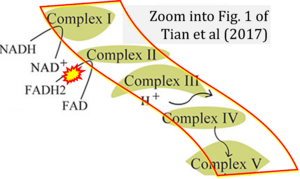Tian 2017 Front Genet
| Tian R, Yin D, Liu Y, Seim I, Xu S, Yang G (2017) Adaptive evolution of energy metabolism-related genes in hypoxia-tolerant mammals. Front Genet 8:205. https://doi.org/10.3389/fgene.2017.00205 |
Tian R, Yin D, Liu Y, Seim I, Xu S, Yang G (2017) Front Genet
Abstract: Animals that are able to sustain life under hypoxic conditions have long captured the imagination of biologists and medical practitioners alike. Although the associated morphological modifications have been extensively described, the mechanisms underlying the evolution of hypoxia tolerance are not well understood. To provide such insights, we investigated genes in four major energy metabolism pathways, and provide evidence of distinct evolutionary paths to mammalian hypoxia-tolerance. Positive selection of genes in the oxidative phosphorylation pathway mainly occurred in terrestrial hypoxia-tolerant species; possible adaptations to chronically hypoxic environments. The strongest candidate for positive selection along cetacean lineages was the citrate cycle signaling pathway, suggestive of enhanced aerobic metabolism during and after a dive. Six genes with cetacean-specific amino acid changes are rate-limiting enzymes involved in the gluconeogenesis pathway, which would be expected to enhance the lactate removal after diving. Intriguingly, 38 parallel amino acid substitutions in 29 genes were observed between hypoxia-tolerant mammals. Of these, 76.3% were radical amino acid changes, suggesting that convergent molecular evolution drives the adaptation to hypoxic stress and similar phenotypic changes. This study provides further insights into life under low oxygen conditions and the evolutionary trajectories of hypoxia-tolerant species.
• Bioblast editor: Gnaiger E
Correction: FADH2 and Complex II
- FADH2 is shown as the substrate feeding electrons into Complex II (CII). This is wrong and requires correction - for details see Gnaiger (2024).
- Gnaiger E (2024) Complex II ambiguities ― FADH2 in the electron transfer system. J Biol Chem 300:105470. https://doi.org/10.1016/j.jbc.2023.105470 - »Bioblast link«
Labels:
Stress:Hypoxia


